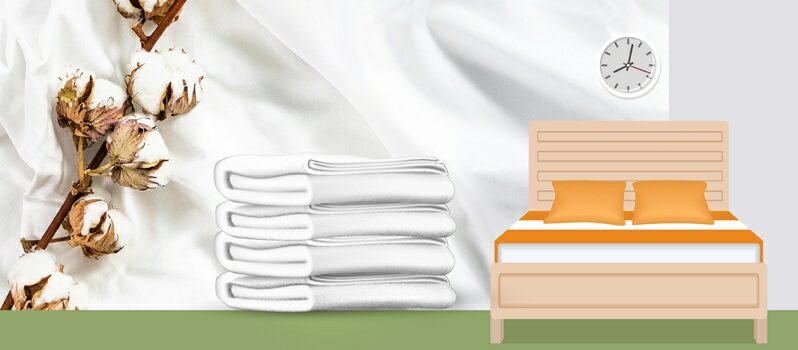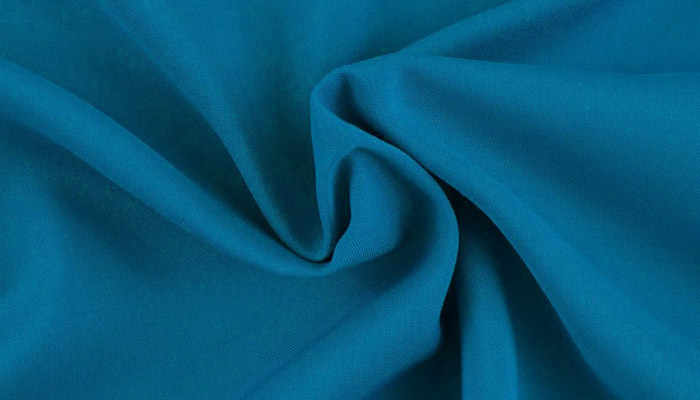Difference Between Viscose and Rayon Fabric: Which is Better?

Most people are unaware of the difference between viscose and rayon fabric. Some think that there is no difference, and technically they may be correct. In fact, the difference between rayon and viscose can be very puzzling for one simple reason – they are technically the same.
The raw material for rayon is cellulose. The two common sources of cellulose in the bedding industry are wood cellulose and bamboo cellulose. Both can be used to create rayon. Viscose is wood cellulose and is used to manufacture rayon as the same way as bamboo cellulose is. Both are rayon, whether made from wood or bamboo cellulose. We shall first look at these sources, and then the benefits each offers to you.
Rayon is a manufactured fiber as opposed to natural fiber. It is made from regenerated cellulose and was originally developed as an alternative to natural silk. The fiber can be used to make soft fabrics, such as those used for sheets, pillowcases, mattress covers, and mattress encasements.

A popular source of cellulose for bedding is bamboo. This is a popular raw material for rayon since it is very fast growing. In fact, bamboo is the fastest growing grass species in the world. Some species can grow up to 3 ft in a day, though most are much slower than this.
In order to produce rayon, bamboo fibers have to be treated chemically. Because of this, it is not permitted to be described as a ‘natural fiber’ but as ‘Rayon from bamboo.’ So what is the difference between rayon and viscose? Let’s find out.
What is viscose if it is not the same as rayon? Is viscose the same as rayon, or is there a viscose rayon as there is a bamboo rayon? The two are, in fact, very similar. Viscose is also a form of cellulose, known as wood cellulose acetate. Just as bamboo cellulose can be used to make rayon, so can viscose (wood) cellulose. One manifestation of viscose is cellulose film, often referred to as cellophane.

So, to clarify the one major difference between viscose and rayon fabric, rayon can be made using wood-derived cellulose (viscose) and it can also be manufactured using bamboo-derived cellulose. Rayon is just one use of viscose. There are many other differences between rayon and viscose, of which the following are just a few of the more important ones.
Rayon was originally developed in the late 19th century (around 1880) as an alternative material to silk. Silk was very expensive then and rayon was seen as a source of a silk-like fiber that reproduced the soft feel of genuine silk. It appeared to an acceptable inexpensive alternative to silk for a number of uses but was found to possess one major flaw.
It was highly flammable. In the late 19th century, when fire safety was not what it is now, this was a very negative property that resulted in it failing to achieve the success expected of it. As a material, viscose rayon drapes really well and breathes just like cotton. It is a popular fiber in the bedding industry, and modern treatments enable it to meet the fireproof regulations of the 21st century.
The difference between viscose rayon and bamboo rayon can be very difficult to understand since the two are so similar in their chemical make-up. Here are some differences:
When discussing the properties of viscose and rayon in the bedding industry it is important to understand that the two are extremely similar – in many cases exactly the same! Both have a luxurious silky feel, and both are manufactured using regenerated cellulose. That is cellulose that has undergone a physical or chemical change.
Hypoallergenic Properties: What is the difference between viscose rayon (Viscose) and bamboo rayon (Rayon)? To begin with, the bamboo fiber is naturally hypoallergenic, meaning that it is an excellent material for those subject to allergies. It is a bedding material unlikely to cause allergic reactions. Here are some other important differences between viscose and bamboo cellulose rayon.
Cooling Properties: Many people prefer bamboo rayon to viscose rayon. That is because of the hypoallergenic properties of bamboo rayon, and its thermal regulation. If you tend to get too hot when sleeping, rayon manufactured from bamboo cellulose helps you remain cooler. The fibers tend to wick away the heat and keep you cool, something that viscose fibers cannot do so well.
Dye Absorbency: Bamboo rayon is very absorbent to dyes and holds its color well. Viscose rayon can also be dyed, although is not as receptive to dyes as bamboo rayon.
There is a small difference between viscose and rayon fabric. Both can be described as rayon, although bamboo rayon and wood pulp viscose display differences in properties. Many people prefer bamboo rayon due to its soft, silky feel and the way it accepts boldly colored dyes.
Richard has been working in the mattress and bedding sales sector for many years, and he believes that he knows just about all there is to know to help you choose the best possible mattress for your needs. He has been featured on sites like Realtor, Mom.com, etc.
Medical Disclaimer: By using the insidebedroom.com website and/or purchasing any products or services through this website, you are voluntarily agreeing to this Disclaimer. You are agreeing that you have read, understand, and consent to the terms herein.
The information and other content found on this website, or in any linked references, are not intended to be expert medical advice and should not be construed as such. No information on this site, including written text, images, graphics and any other form of information, is intended to be a substitute for professional medical advice, treatment or diagnosis, but is intended for informational purposes only. If you need any form of medical advice or information, then refer to your physician or other medical expert.
Rosechandran Ramachandran says
So, which one of the two – Viscose or Rayon or Linen or Cotton is the best for human use promoting good health and breathing properties and without chemical processes and is safe?
Richard Morse says
Bamboo Rayon fabric because of its hypoallergic properties. Many people prefer bamboo rayon due to its soft, silky feel and the way it accepts boldly colored dyes.
P Yarwood says
Why am I allergic to acetate and acetate rayon but not viscose and vicissitudes rayon and how can I tell the difference when the label just says ‘rayon’.